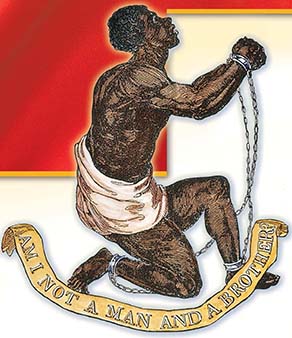SECTION 2: A Rising Tide of Protest and Violence

◄ This image first appeared around 1835 and became an abolitionist symbol.

Tags used to identify slaves ►
WITNESS HISTORY  AUDIO
AUDIO
Slavery and Union
By the time Congress debated the Compromise of 1850, white Boston abolitionist William Lloyd Garrison had been protesting against slavery for more than two decades and a growing number of Americans were joining his cause. He stated his resistance to compromise clearly:
“I am for union! … [but] I am not for SLAVERY and UNION…. [T]his is the issue we make before the country and the world.”
—William Lloyd Garrison, 1850
Objectives
- Analyze why the Fugitive Slave Act increased tensions between the North and South.
- Assess how the Kansas-Nebraska Act was seen differently by the North and South.
- Explain why fighting broke out in Kansas and the effects of that conflict.
Terms and People
- personal liberty laws
- Underground Railroad
- Harriet Tubman
- Harriet Beecher Stowe
- Kansas-Nebraska Act
- John Brown
- “Bleeding Kansas”
NoteTaking
Reading Skill: Understand Effects Use a concept web to record the effects of the Fugitive Slave Act on different groups of people.

Abolitionists
Fugitive Slave Act
Fugitive slaves
Why It Matters Americans had greeted the Compromise of 1850 with relief. But the ink on the document had barely dried before the issue of slavery resurfaced, this time with violent results. Section Focus Question: How did the Fugitive Slave Act and the Kansas-Nebraska Act increase tensions between the North and the South?
Resistance Against the Fugitive Slave Act
The Compromise of 1850 was meant to calm the fears of Americans. But one provision, the new Fugitive Slave Act, had the opposite effect. The law, which required citizens to catch and return runaway slaves, enraged many northerners. The anger was not restricted to abolitionists; it extended to other northerners who felt forced to support the slave system.
Northerners also resented what they saw as increasing federal intervention in the affairs of the independent states. A few northern states struck back, passing personal liberty laws. These statutes nullified the Fugitive Slave Act and allowed the state to arrest slave catchers for kidnapping. Many northerners agreed with abolitionist William Lloyd Garrison when he demanded “nothing less than … a Revolution in the Government of the country.”




